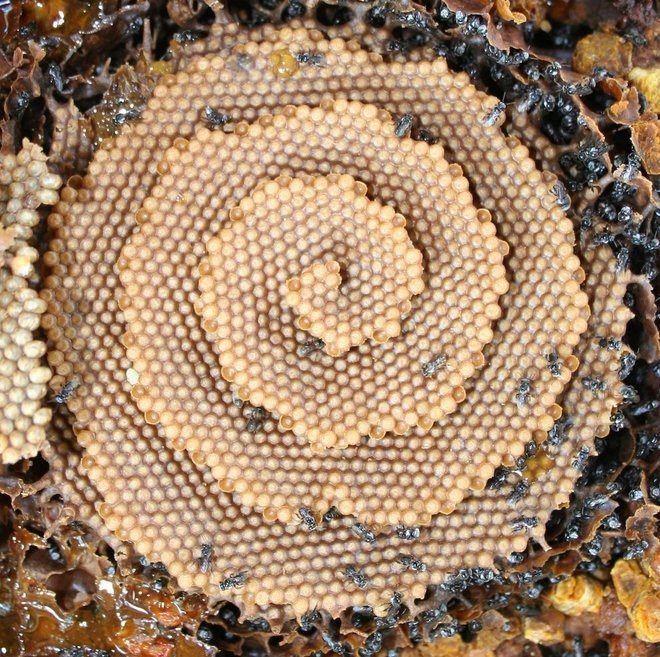Found: A Spiraling Bees’ Nest
And they’re stingless!

Insects can be pretty skilled architects. Among the most wondrous examples of arthropod design are the flower petal–based nests of mason bees, the communal homes of eastern tent caterpillars, and the cathedral-like mounds built by termites in Australia.
Last week, the handiwork of Tetragonula carbonaria, a stingless bee found in northern Australia moved into the spotlight, thanks to a startling Reddit post showcasing their elegant spiraling nests. According to Tim Heard, an Australian entomologist and the author of The Australian Native Bee Book, the visible spiral is just the topmost layer of the complex, multistoried structure the bees build. A fully developed nest can contain a 10 to 20 continuously spiraling layers. As shown in the video below, each circle can contain hundreds of brood cells containing eggs.
The eggs develop into larvae, then pupae, and finally adult bees. Once the adult bee leaves the cell, new brood cells are built off of it, which helps form the spiral structure.
This nest-building process, according to Heard, can go on indefinitely, as long as a queen can lay new eggs. For now we don’t know exactly why the nests take the spiraling form. “A possible adaptive advantage of this form is that it is efficient use of space and also facilitates the circulation of air between the layers,” Heard told Live Science. “But then one has to ask, why it is not more common?”























Follow us on Twitter to get the latest on the world's hidden wonders.
Like us on Facebook to get the latest on the world's hidden wonders.
Follow us on Twitter Like us on Facebook